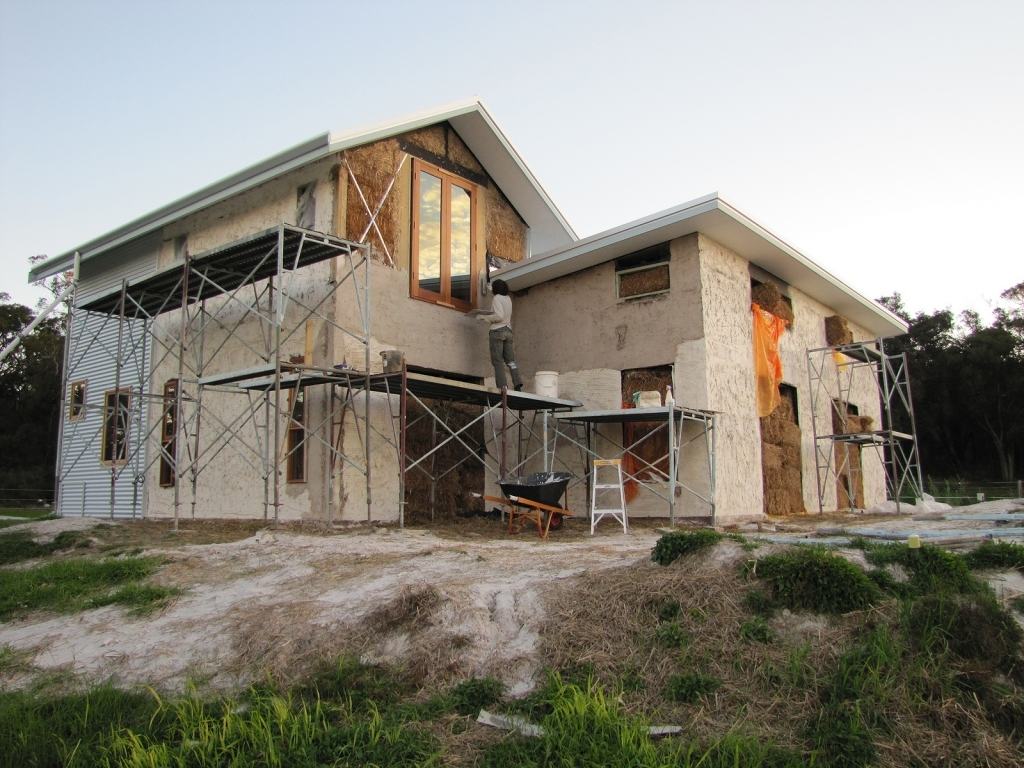Are you planning a self-build home in the UK and exploring sustainable building techniques? Straw bale construction offers one of the most natural, affordable and energy-efficient ways to build a home. In this article, we’ll explore the pros and cons of straw bale homes, whether they suit the UK climate, and how Design for Me can help you find the right architect for your eco self-build journey.
What Is Straw Bale Construction?
Straw bale construction uses tightly packed bales of straw – as either insulation or a structural element within a wall. These bales are coated in breathable lime or clay plaster to create a durable, weather-resistant surface. When designed and built correctly, straw bale homes can meet or exceed UK Building Regulations for energy efficiency and performance.
Benefits of Straw Bale Homes in the UK
1. Natural, Renewable Materials
Straw is an agricultural by-product that is renewable, biodegradable and often locally sourced. Using straw reduces the need for carbon-intensive materials and aligns with key eco design principles for self-builds.
2. Excellent Insulation
Straw bales provide outstanding thermal insulation, helping you create a highly energy-efficient home. When combined with passive design strategies, this can reduce your reliance on heating systems and cut energy bills over time.
3. Breathable and Healthy Living Environment
Unlike many modern construction materials, straw and natural renders allow the building to breathe. This helps regulate humidity and contributes to healthier indoor air quality.
4. Low Embodied Carbon
Straw stores carbon as it grows. Using it in construction helps sequester carbon rather than release it into the atmosphere. This makes it an excellent choice for a low-carbon or carbon-neutral home.
5. Aesthetic Flexibility
Straw bale buildings often have a warm, natural appearance. Curved walls, deep reveals and sculptural forms are all easier to achieve than with many conventional methods.
Challenges to Consider
1. Moisture Protection
The biggest challenge with straw bale construction in the UK is moisture. The bales must remain dry to avoid decay. Good design, such as wide roof overhangs, raised foundations, and high-quality breathable render, is essential to protect your walls from persistent British rain.
2. Specialist Knowledge Required
Not all builders or architects have experience with straw bale construction. It’s vital to work with professionals who understand the material, from structural detailing to building regulations.
3. Planning and Building Control
Although becoming more accepted, straw bale is still considered a non-standard method in UK construction. You’ll need a well-prepared design and application to meet the relevant parts of the Building Regulations.
For comparison with other systems, see our guide to typical self-build construction methods.
Where Do Straw Bale Homes Work Best in the UK?
- Rural or edge-of-village plots where a natural aesthetic is welcome
- Eco-conscious self-builders seeking natural insulation and a low-carbon footprint
- Homes designed with Earthship or passive solar principles
How Design for Me Can Help
Straw bale construction is a specialist area, so finding the right architect is crucial. Design for Me connects self-builders in the UK with experienced architects who specialise in natural materials, sustainable construction and low-energy homes.
Simply post your project and we’ll match you with architects who understand your goals and location. Whether you’re building in the countryside, or a conservation area, we’ll help you get the expertise you need.
Ready to start your eco home journey?




Desmond
Oh yes, I remember seenig the programme showing Ben’s progress with that build and when the TV crew returned (a year?) later he had a partner and child. Beautiful home.Tony Wrench’s roundhouse at Brithdir Mawr, Wales is kinda cute but unfortunately it can give the impression that strawbale house build isn’t more mainstream. Some of the other examples thankfully show us that this method can be applied in a more practical sense.